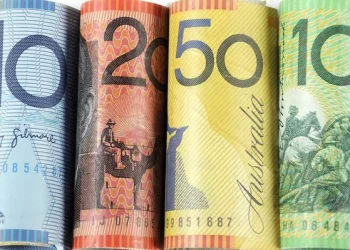The Indian Rupee (INR) continues its downward trajectory on Thursday, weighed down by expectations of an interest rate cut by the Reserve Bank of India (RBI) and growing global trade tensions, which have fueled risk aversion among investors.
Despite these challenges, the RBI’s foreign exchange interventions and a decline in global crude oil prices are likely to provide some support, limiting further losses for the INR. Market attention will shift later Thursday to the release of the US weekly Initial Jobless Claims, Unit Labor Costs, and Nonfarm Productivity data. The focus will intensify on the RBI’s upcoming interest rate decision and US January employment data due on Friday.
Rupee Pressured as RBI Readies Rate Cuts
Traders believe that the RBI may be conducting USD-INR buy/sell swaps, pushing forward premiums lower. As of the latest data, the USD/INR 1-year forward implied yield has retreated to 2.19% from the day’s high. Many economists surveyed by Bloomberg anticipate a 25 basis point (bps) rate cut by the RBI, lowering the benchmark repurchase rate to 6.25% on Friday.
In economic data, HSBC India’s Composite PMI for January came in at 57.7, weaker than the prior reading and below the forecasted 57.9. The Services PMI also slipped to a two-year low of 56.5 from 56.8, marking a slowdown in growth momentum in India’s services sector. According to Pranjul Bhandari, Chief India Economist at HSBC, “The business activity and new business PMI indices eased to their lowest levels since November 2022 and November 2023, respectively.”
The US Services PMI for January also eased to 52.8, falling short of market expectations and highlighting broader economic concerns. Fed Vice Chair Philip Jefferson remarked that he is comfortable keeping the Fed Funds rate on hold, awaiting the full impact of current policies.
USD/INR Maintains Upward Trajectory
Despite the INR’s weakness, the USD/INR pair remains bullish, holding above the key 100-day Exponential Moving Average (EMA). However, further consolidation could occur before any significant appreciation, as the 14-day Relative Strength Index (RSI) moves above the 70.00 mark, signaling potential overbought conditions.
The immediate resistance for USD/INR is at 87.49, an all-time high, with bullish momentum above this level potentially driving the pair toward the psychological 88.00 mark. Conversely, support for the pair is seen around the 87.05-87.00 area, marking the low of February 5. If the pair consistently trades below this level, bearish pressure could bring USD/INR down to 86.51, the low of February 3.
Related Topics:

























